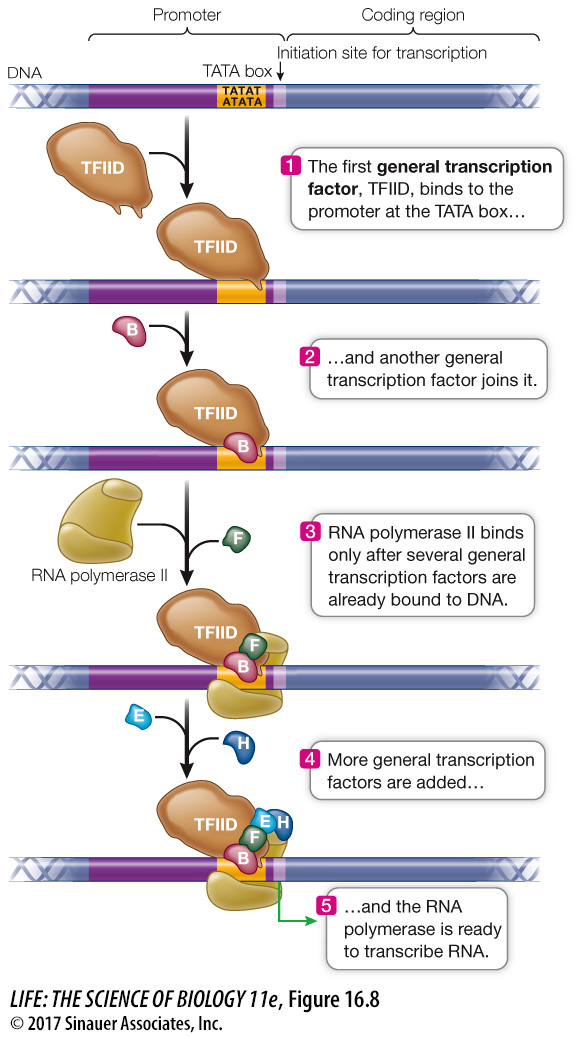General transcription factors act at eukaryotic promoters
As in prokaryotes, a promoter in a eukaryotic gene is a sequence of DNA near the 5′ end of the coding region, where RNA polymerase binds and initiates transcription. Although eukaryotic promoters are more diverse than those of prokaryotes, many contain a nucleotide sequence similar to the –10 element in prokaryotic promoters. This element is usually located close to the transcription start site and is called the TATA box because it is rich in AT base pairs. The TATA box is the site where DNA begins to denature so that the template strand can be exposed. In addition to the TATA box, eukaryotic promoters typically include multiple regulatory sequences that are recognized and bound by transcription factors: regulatory proteins that help control transcription.
Like the prokaryotic RNA polymerase, eukaryotic RNA polymerase II cannot simply bind to the promoter and initiate transcription. Rather, it does so only after various general transcription factors have assembled on the chromosome (Figure 16.8). General transcription factors bind to most promoters and are distinct from transcription factors that act only at certain promoters or classes of promoters. First, the protein complex called TFIID (“TF” stands for transcription factor) binds to the TATA box. Binding of TFIID changes both its own shape and that of the DNA, presenting a new surface that attracts the binding of other general transcription factors to form a transcription initiation complex. RNA polymerase II binds only after several other proteins have bound to this complex.

Animation 16.3 Initiation of Transcription
www.Life11e.com/
343
Each general transcription factor has a role in gene expression:
TFIIB binds both RNA polymerase and TFIID, and helps identify the transcription initiation site.
TFIIF prevents nonspecific binding of the complex to DNA and helps recruit RNA polymerase to the complex; it is similar in function to a bacterial sigma factor.
TFIIE binds to the promoter and stabilizes the denaturation of the DNA.
TFIIH opens up the DNA for transcription.
Some regulatory DNA sequences, such as the TATA box, are common to the promoters of many eukaryotic genes and are recognized by general transcription factors that are found in all the cells of an organism. Other regulatory sequences are present in only a few genes and are recognized by specific transcription factors. These factors may be found only in certain types of cells or at certain stages of the cell cycle, or they may be activated by signaling pathways in response to cellular or environmental signals (see Chapter 7).